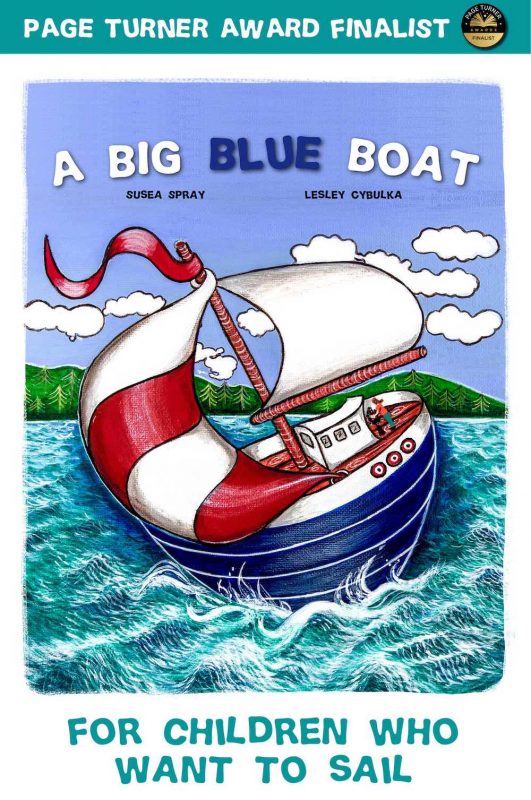Wouldn’t it be nice if a million people bought your children’s picture book overnight? Of course, but is that a reality? What are the right expectations to set before you invest your time and money in indie book development?
You’ve completed your book. It’s edited, illustrated and designed, and you’ve done your keyword research to get that App Store and Amazon description just right. It’s time; are you excited? Anxious? Tired of staring at your screen? You glide the mouse over to the publish button. Click! Lean back in your chair and rub your hands together. Tomorrow the world will see your book, they’ll love the cover and your adventurous tale, and they will buy it and tell their friends.
But they won’t.
Publishing your book is not the time to lean back and relax; it’s the time to lean in and really start to work. If you do nothing after your book is published, chances are you will login in after a week and find there’s been no sales at all – your heart will sink. Like a boat floating in the middle of the ocean, your book won’t make landfall on anyone’s tablet or phone or bookshelf unless you show them the map.
But You Should Still Do Your Book
So does this mean you shouldn’t even start? Of course not, but it is important to set the right expectations before you begin. And to budget with those expectations in mind.
When I begin a new children’s picture book, I set a modest bar for “success.” Firstly, I want to be able to be able to read a story of my own creation to my children. For them to know the characters and the setting and to have that adventure boil away in their imaginations. Secondly, I’d like their cousins and friends, and my own family friends, to also enjoy the book. And that’s it. That’s success for me.
That’s a really easy goal to achieve. You can control that quite easily as you can talk to your friends and family, and you can sit down with your children. It’s incredibly rewarding, and it’s fantastic when a friend mentions how much their child loves a character or book I have created. There’s a growing number of children in our circle who know and love Willy Nilly.
Then if its sells, well that is the cream on top. Yummy, tasty cream that I want, but – because of where I set my expectations – don’t need to be happy.
The World is Your Audience
The nature of digital media is that it is free to distribute – more or less anyway – it’s global and it’s evergreen. There are hundreds of millions, if not billions, of people on Earth plugged into stores like Amazon and the App Store right now, and every day they are searching for products just like your book.
As such, I do believe everything you make will eventually earn back the cost of production - and then some - because of the sheer size of the audience you can reach. But whether that happens overnight, or happens over years, is up to you.
Every act you do helps build out that map a little more and lead the little boat to land. It could be a poster at the local school or kindy. An old-fashion letterbox drop. A story in the community paper. Campaigning blog editors for reviews and interviews. Posting stories in forums. Getting friends and family to share your links on social media. I will shortly do another post with all my tips in this regard, but many of them are common sense.
Pushing the Wheel
Awareness on the internet is like a big heavy stone wheel and you know that each time it rolls, it is going to fill out the map linking your book to a reader that little bit more. At first it’s really hard to push and sometimes it feels like it is going to roll back and crush you. But once you get it to roll once, the next roll is easier. Then it gets easier, and easier, and easier – eventually the wheel is rolling itself because the internet is word-of-mouth, and once word-of-mouth starts in earnest, it is self-perpetuating. That’s “going viral.”
It’s also important to remember that for the rest of time, that wheel will happily get faster and faster the more you are willing to push it. You never have to stop. And if it is going really fast, well, that’s a great way to get noticed by hard copy publishers and agents who can open up more doors and avenues of sale for your book (for a cut, of course).
In relation to book sales, “pushing that wheel” is about getting links out there, getting them shared and getting people downloading and reviewing your books so you can become a more worthy destination in the eyes of the App Store and Amazon search algorithms. How much time do you have to spend on that? Maybe, if you have two hours every day to push that wheel, you can raise your initial expectations and set new goals.
Set the Right Goals
But of course, it’s dangerous to set this as your initial expectation. Make a great book and read it to your child and watch the enjoyment fill their face with wonder. Make sure your friends read it to their kids and spread the word. Achieve that and consider it a success. Then know the reality of your book - a little boat lost at sea - and decide just how hard you want to push that wheel.
Where to Next?
Guide: Hiring an Editor - The Difference Between a Sub-Editor and a Editor
Or
Guide: How To Shape Story in a Children's Picture Book
Or
Guide: Text Layout in a Children's Picture Book
Or
Guide: A Step-by-Step Guide to Making a Children's Picture Book
Credit: Book of Imagination image by T1na








